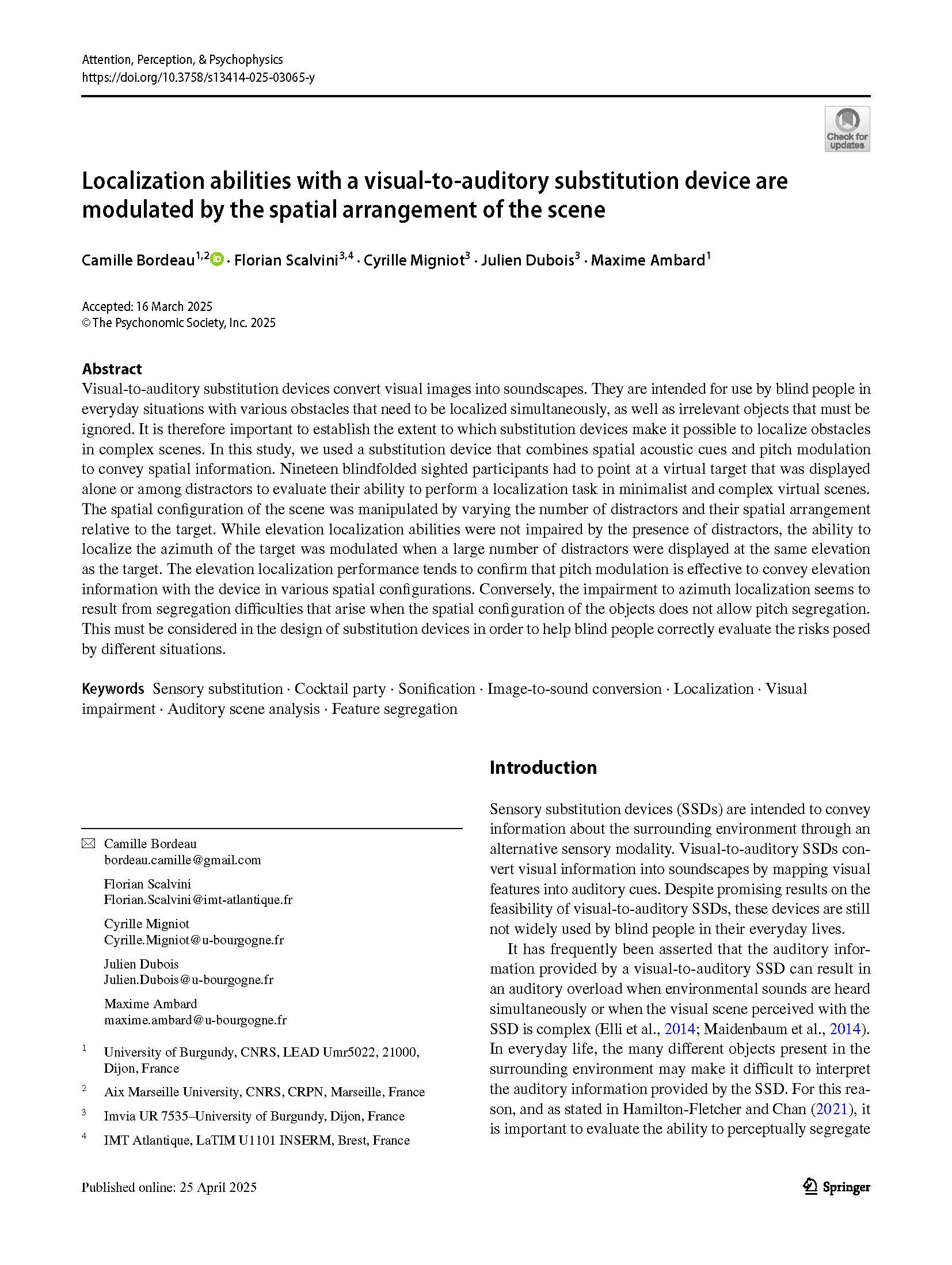Visual-to-auditory substitution devices convert visual images into soundscapes. They are intended for use by blind people in everyday situations with various obstacles that need to be localized simultaneously, as well as irrelevant objects that must be ignored. It is therefore important to establish the extent to which substitution devices make it possible to localize obstacles in complex scenes. In this study, we used a substitution device that combines spatial acoustic cues and pitch modulation to convey spatial information. Nineteen blindfolded sighted participants had to point at a virtual target that was displayed alone or among distractors to evaluate their ability to perform a localization task in minimalist and complex virtual scenes. The spatial configuration of the scene was manipulated by varying the number of distractors and their spatial arrangement relative to the target. While elevation localization abilities were not impaired by the presence of distractors, the ability to localize the azimuth of the target was modulated when a large number of distractors were displayed at the same elevation
as the target. The elevation localization performance tends to confirm that pitch modulation is effective to convey elevation information with the device in various spatial configurations. Conversely, the impairment to azimuth localization seems to result from segregation difficulties that arise when the spatial configuration of the objects does not allow pitch segregation. This must be considered in the design of substitution devices in order to help blind people correctly evaluate the risks posed by different situations.
Localization abilities with a visual‑to‑auditory substitution device aremodulated by the spatial arrangement of the scene
